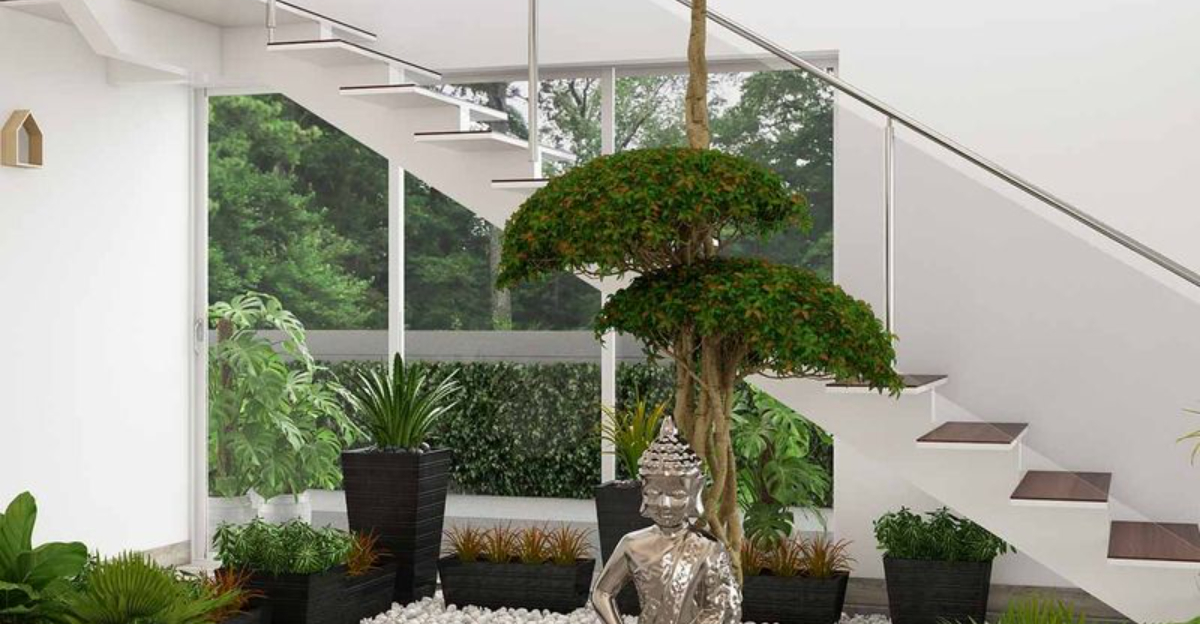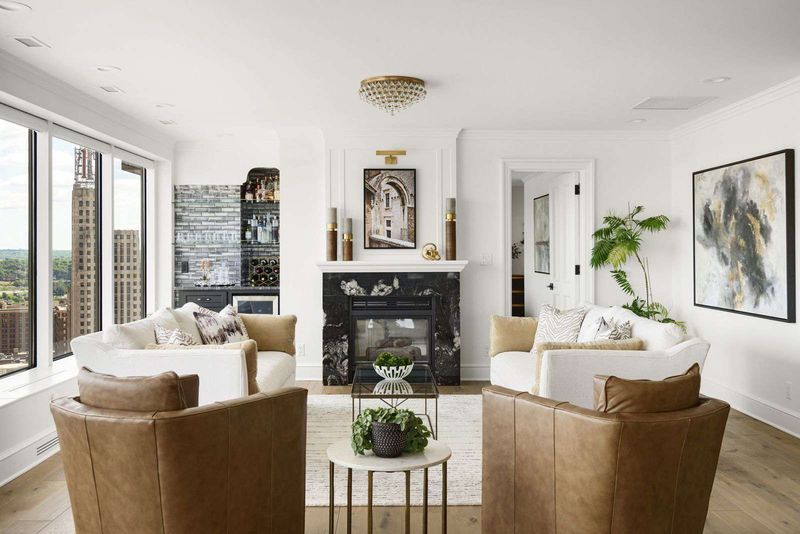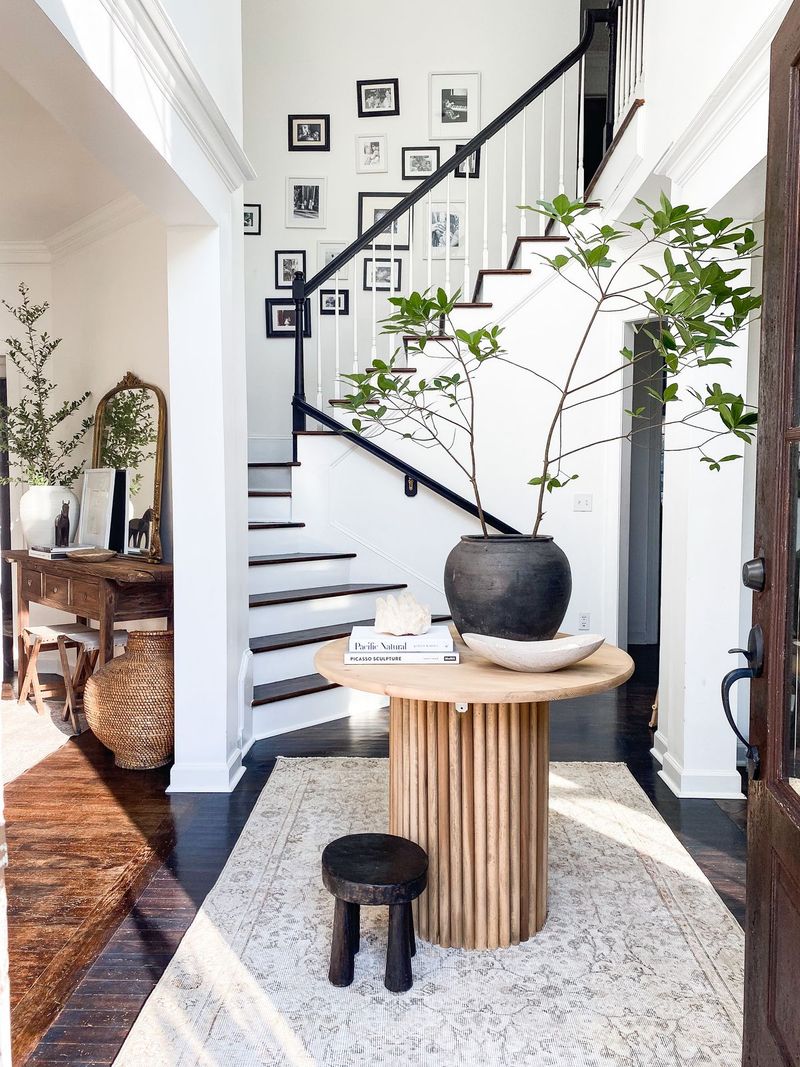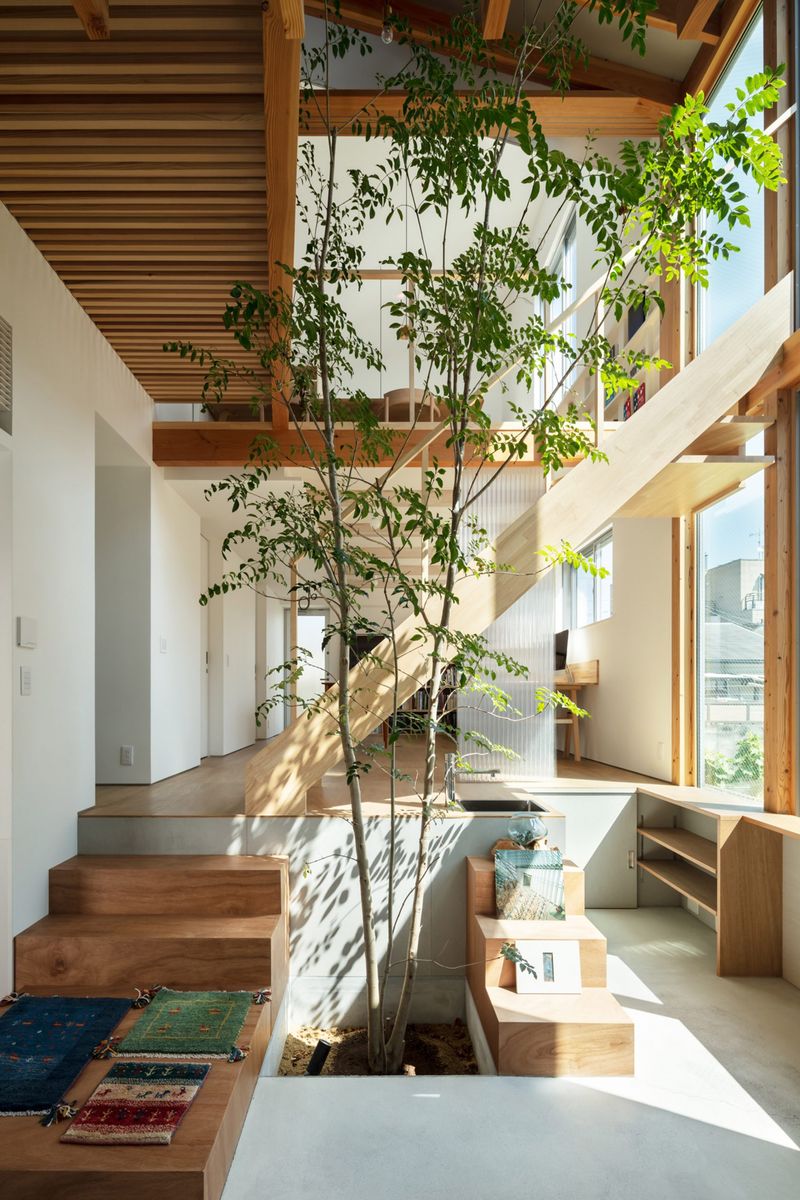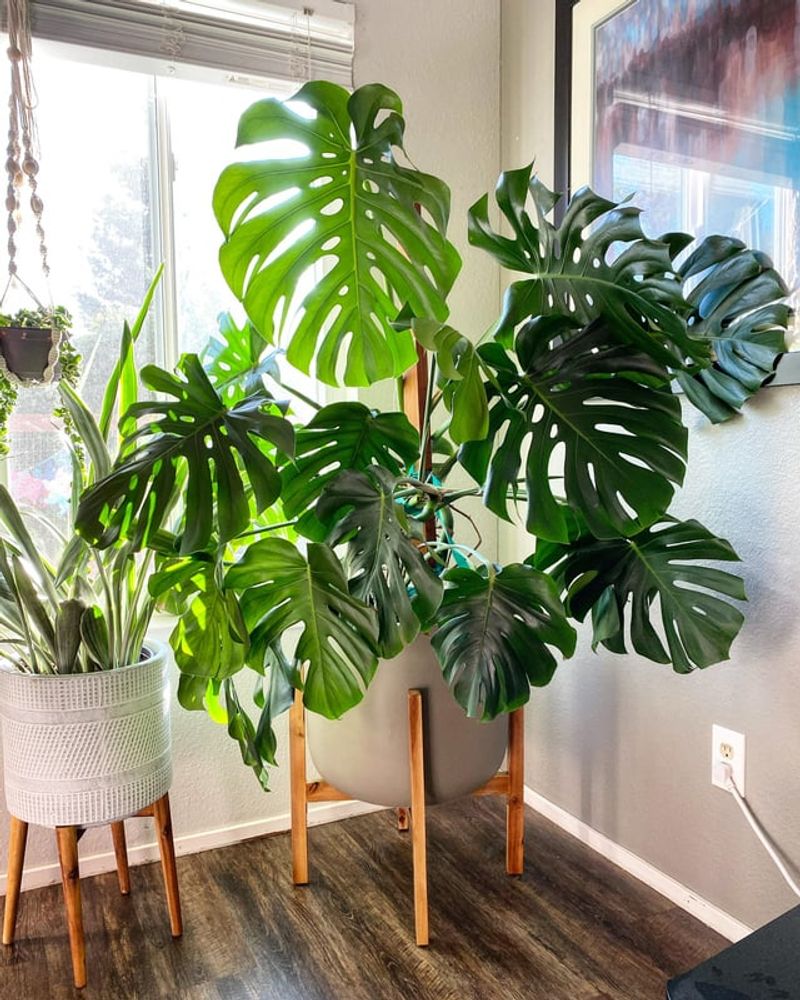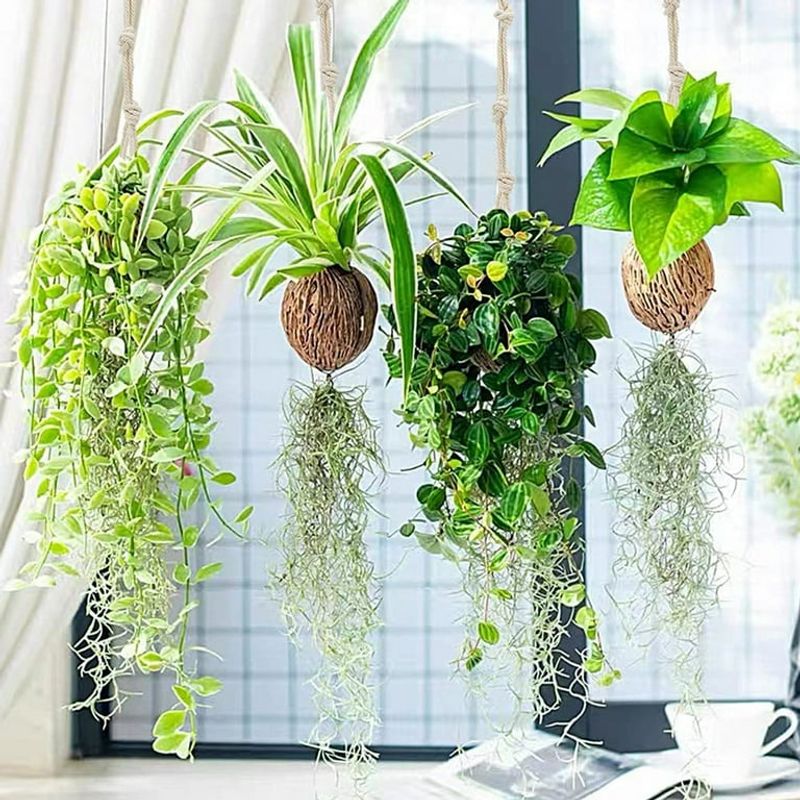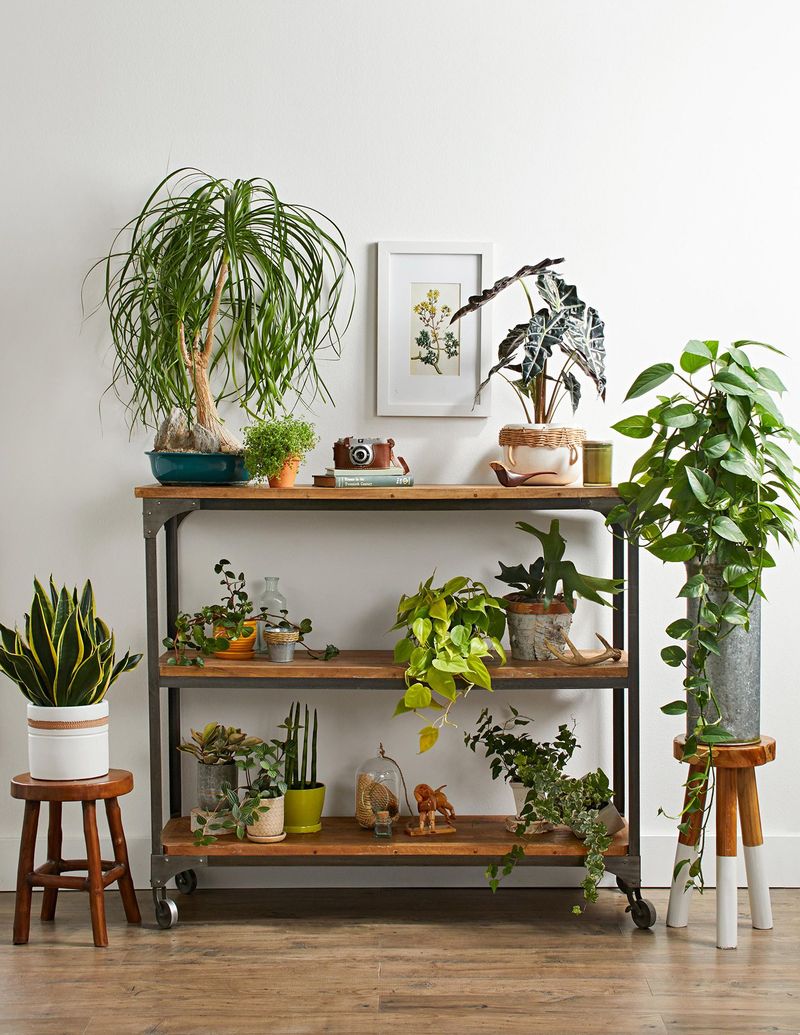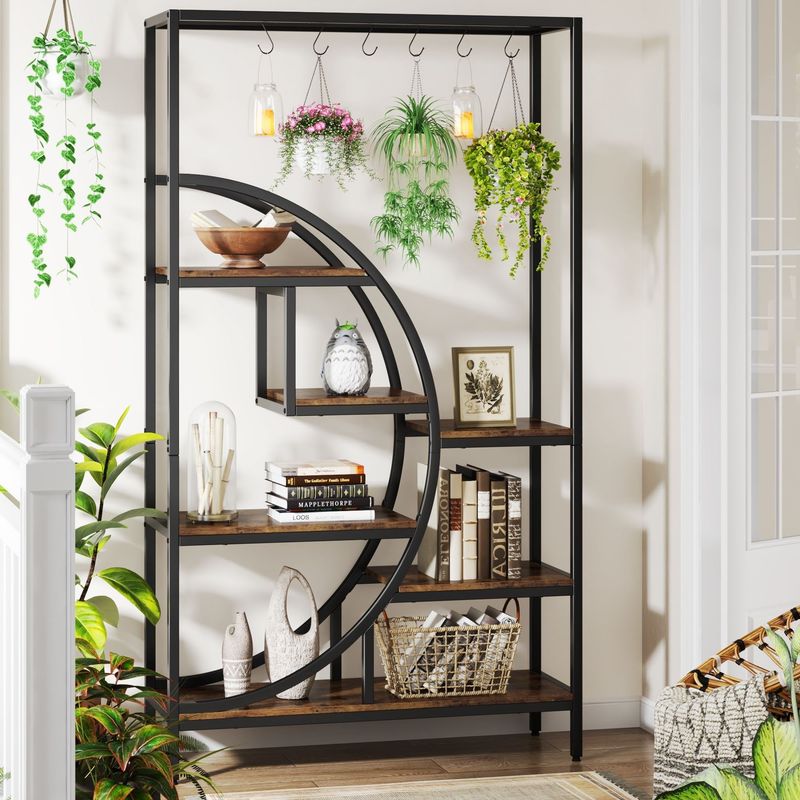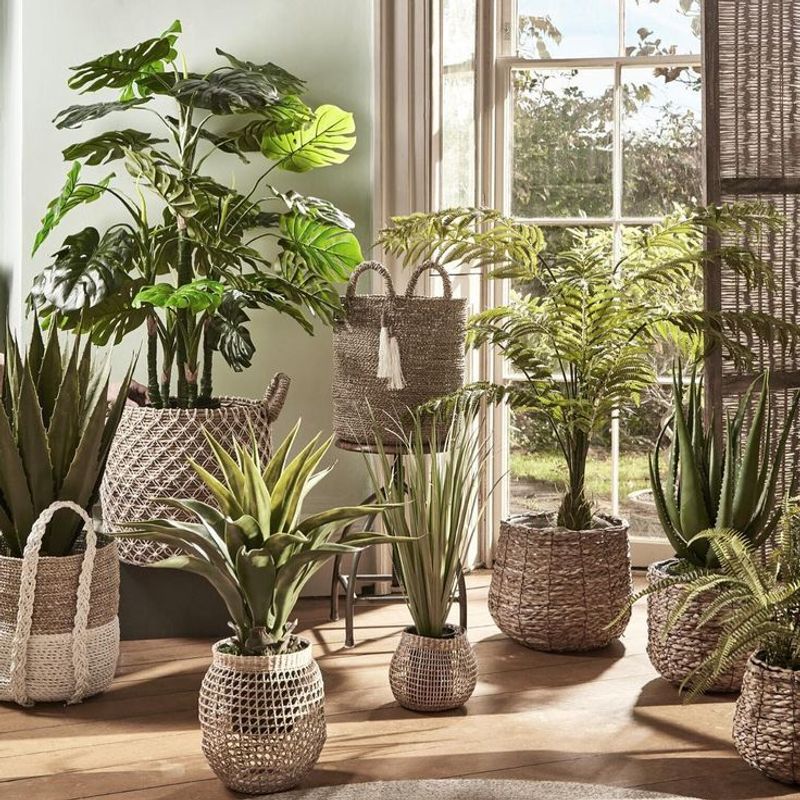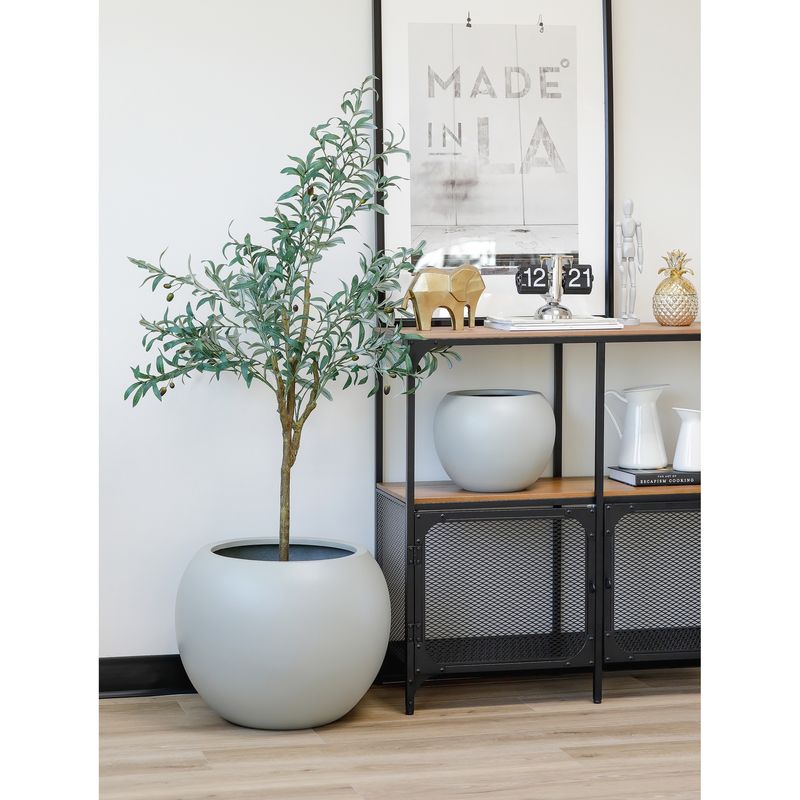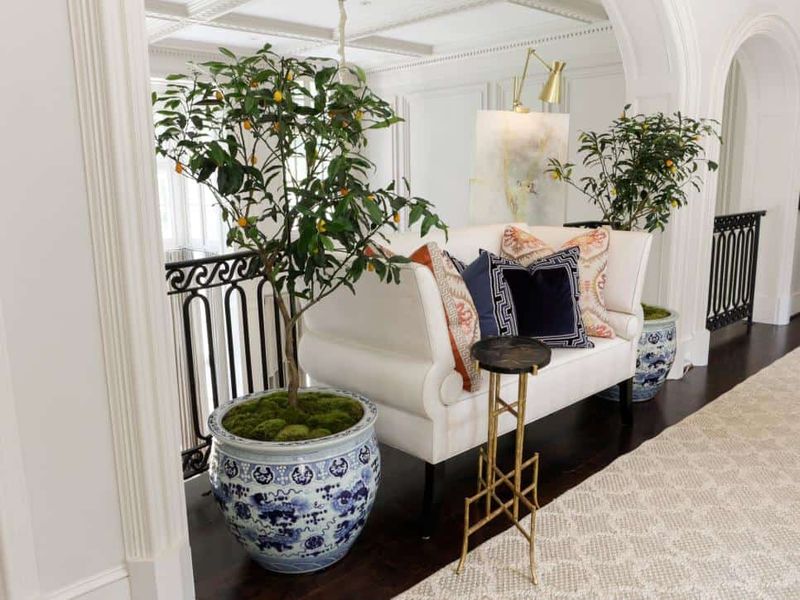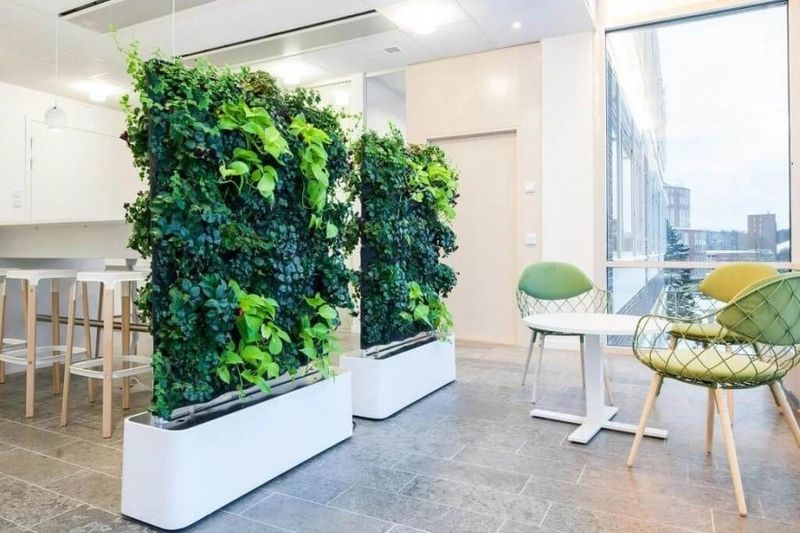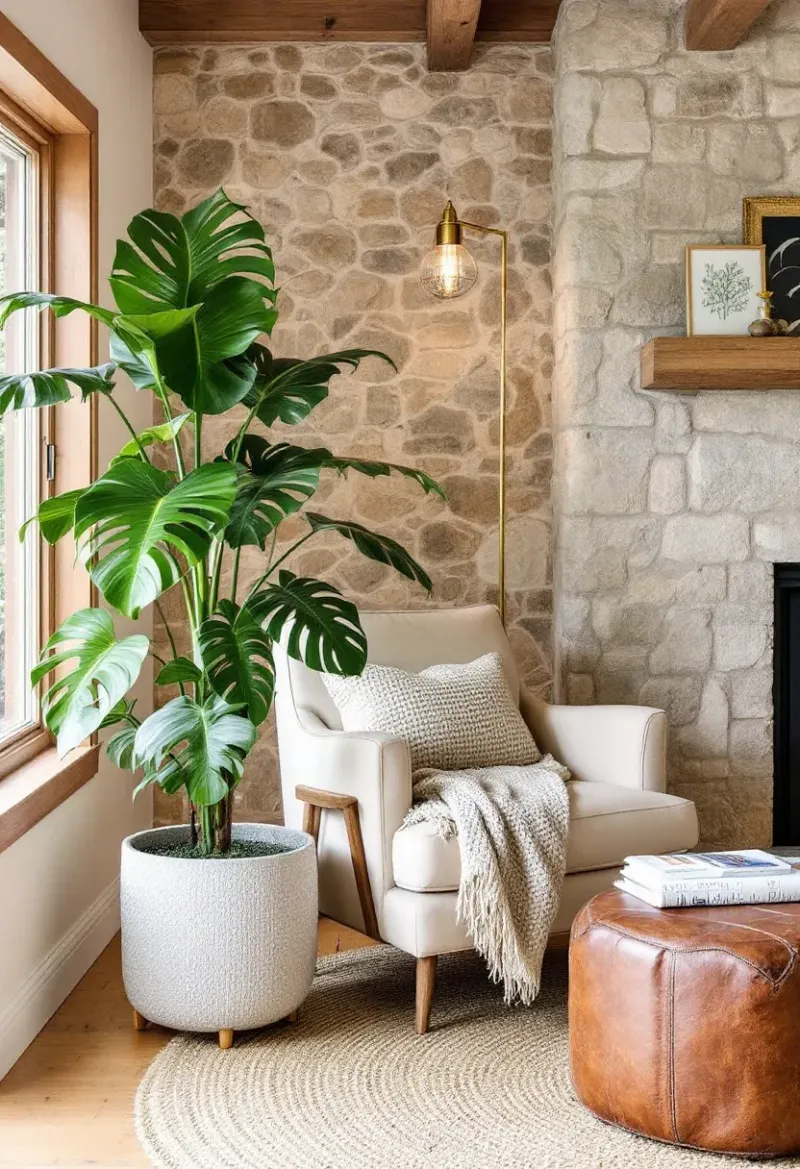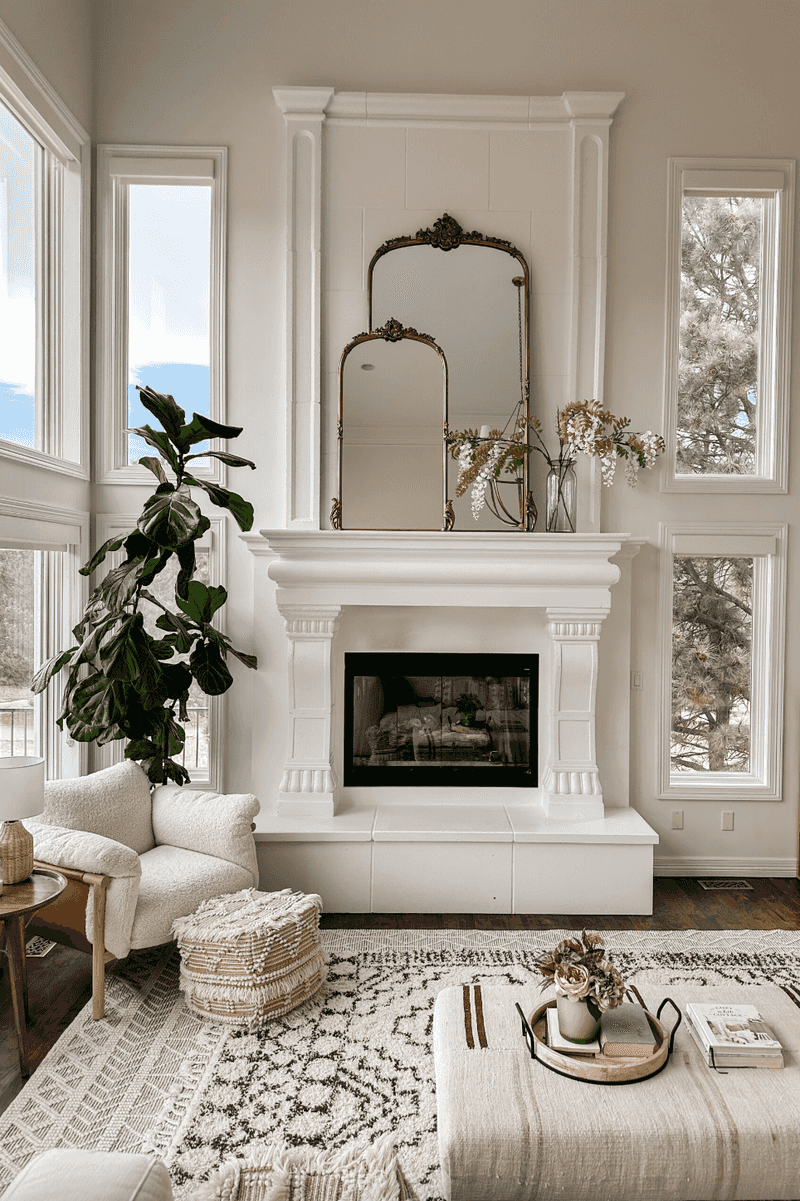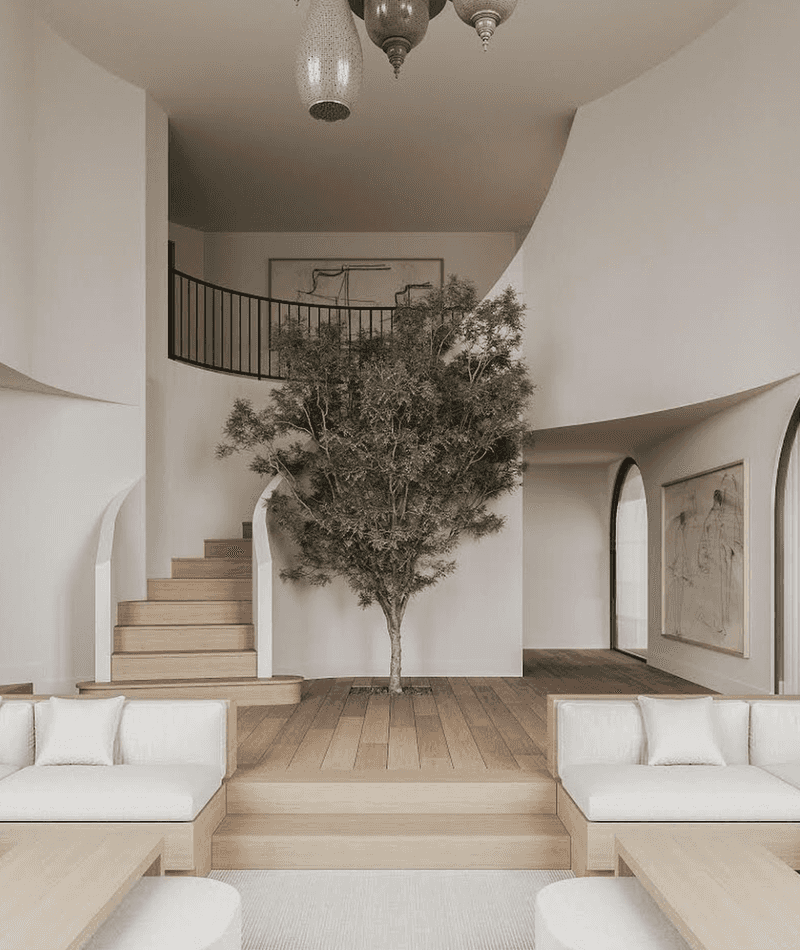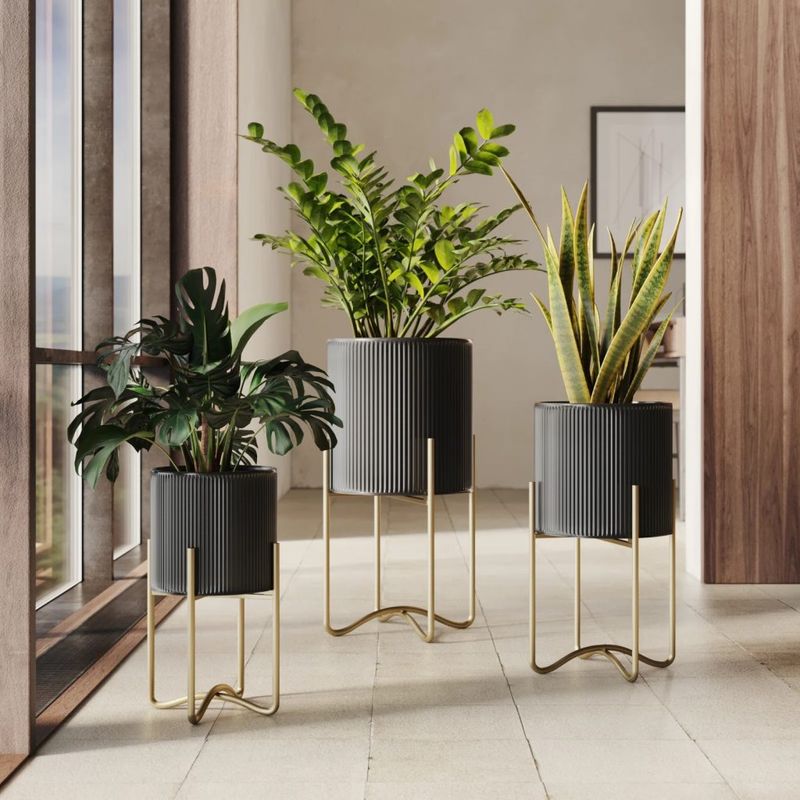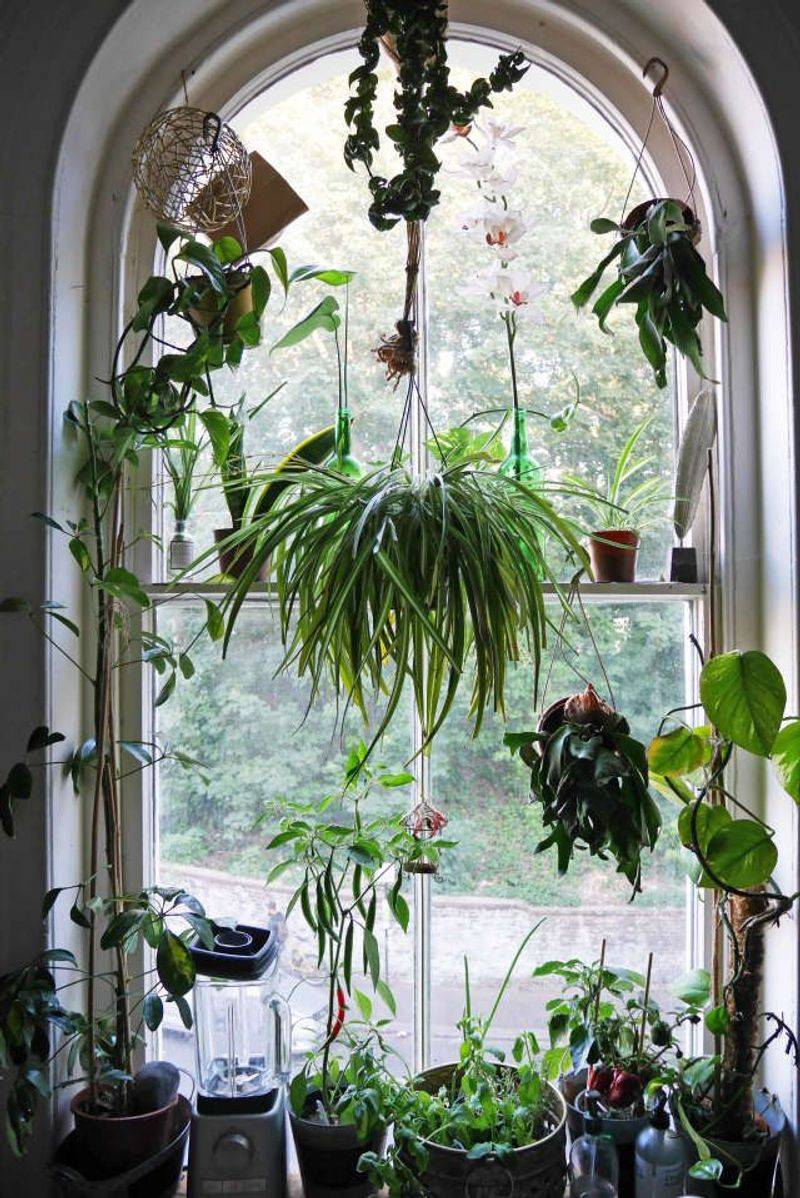Large indoor plants bring a breath of fresh air and natural beauty to any home, but finding space for them can be tricky.
Nobody wants their living room feeling like an overcrowded jungle! With a bit of creativity, you can showcase those gorgeous leafy friends without sacrificing precious floor space or creating a cluttered look.
Check out these 18 clever ways to incorporate statement plants into your home decor while maintaining an open, airy feel.
1. Corner Placement
Empty corners often become forgotten dead spaces in our homes. By positioning a large floor plant in these underutilized areas, you’re maximizing square footage while adding life to an otherwise bland spot.
The angular walls provide natural boundaries, preventing the plant from overwhelming the room. Plus, the height draws the eye upward, creating the illusion of taller ceilings and more spacious rooms.
2. Statement Entryway Plant
First impressions matter! When guests enter your home, a magnificent plant by the door creates an immediate wow factor without taking up valuable living space.
Choose something tall and architectural like a bird of paradise or majesty palm. The entryway is typically a transitional space, making it perfect for a bold plant that might overwhelm smaller rooms.
3. Floor-to-Ceiling Windows Backdrop
Have gorgeous windows with a view? Rather than blocking them completely, try positioning plants strategically alongside them.
The natural light creates a perfect growing environment while the greenery frames your view instead of obstructing it. When sunlight filters through leaves, it creates a magical dappled effect that adds dimension to your space without making it feel cramped.
4. Plant Stands
Who says plants need to take up precious floor space? Elevating greenery on slender plant stands creates breathing room underneath while drawing the eye upward.
The visual space beneath the plant keeps rooms feeling open and airy. Look for stands with minimal footprints but sturdy construction – mid-century modern styles with hairpin legs work beautifully for creating this floating effect.
5. Hanging Planters
Gravity-defying plants are the ultimate space-savers! Suspending greenery from ceilings or wall-mounted hooks instantly frees up valuable floor and surface area.
Trailing varieties like pothos or spider plants create dramatic cascading effects that add visual interest without cluttering horizontal surfaces. For maximum impact with minimal intrusion, group several hanging planters at varying heights in an otherwise unused corner.
6. Grouping With Smaller Plants
Creating a mini landscape with plants of varying heights adds depth without requiring additional floor space. The trick is positioning the tallest specimen at the back with progressively smaller plants in front.
This layered approach mimics natural plant communities while creating a cohesive group that reads as a single decorative element. The arrangement provides visual complexity without the scattered, cluttered feeling of randomly placed pots.
7. Open Shelving Display
Thinking beyond the floor opens up exciting possibilities! Sturdy open shelving provides perfect platforms for displaying medium-sized plants at eye level, freeing up valuable floor space.
Alternating plants with books and decorative objects creates balance and prevents the shelves from feeling like a greenhouse. Remember to consider light requirements and choose plant varieties that will thrive in your shelf’s specific conditions.
8. Plants in Baskets
Forget those boring plastic nursery pots! Nestling plant containers inside beautiful woven baskets instantly elevates your greenery while adding wonderful texture to your space.
The soft, natural materials balance the structured shapes of large plants, creating visual harmony. As an added bonus, baskets make moving heavy plants easier – simply slide them across the floor rather than lifting when it’s time to vacuum or rearrange.
9. Minimalist Pots
Sometimes less truly is more! Clean-lined, simple containers let your magnificent plants take center stage without competing for attention.
White, black, or concrete planters with straightforward silhouettes create a contemporary look that doesn’t overwhelm the eye. This minimalist approach prevents visual clutter even when the plants themselves are large and dramatic, making the space feel deliberately designed rather than overcrowded.
10. Flanking Furniture
Balance is key in interior design, and nothing creates symmetry quite like matching plants on either side of a significant piece of furniture.
Identical specimens flanking a sofa, console table, or fireplace create an intentional, polished look. The plants become architectural elements that frame the space rather than random additions. This deliberate placement prevents the cluttered feeling that can happen when plants are scattered haphazardly.
11. Dividing Open Spaces
Open concept homes can sometimes feel cavernous without proper definition. Large plants make perfect natural room dividers that maintain openness while creating distinct zones.
Position a tall leafy plant to separate your dining area from the living space without blocking sightlines or light flow. Unlike solid furniture pieces, plants create gentle boundaries that still allow conversation and connection between spaces.
12. Tall Plant in Reading Nook
Imagine curling up with a good book under the gentle canopy of a leafy friend! A reading nook practically begs for a tall plant companion to create a cozy, enclosed feeling.
Position your plant slightly behind your reading chair where it won’t obstruct movement but still provides that sheltered sensation. The greenery softens the space while the height draws your eye upward, making even small reading corners feel more expansive.
13. Pairing With Mirrors
Magic happens when you position plants near mirrors! The reflection instantly doubles your greenery without requiring additional plants or space.
This clever trick creates depth and makes rooms appear larger than they actually are. For maximum impact, place a statement plant at an angle to your mirror rather than directly in front – this creates a more natural, layered look than a perfectly symmetrical reflection.
14. Under Stair Placement
That awkward space beneath staircases often becomes a cluttered catch-all area. Transform this underutilized spot into a mini indoor garden with large, shade-tolerant specimens.
The natural slope of the stairs creates a perfect backdrop for plants of graduating heights. This smart placement takes advantage of otherwise wasted space while drawing attention to an architectural feature that might otherwise go unnoticed.
15. Framing a Fireplace
Already have a natural focal point? Make it even more spectacular! Positioning large plants alongside a fireplace enhances its impact while creating balance.
The organic shapes of foliage beautifully contrast with the structured lines of the mantel and hearth. Choose heat-tolerant varieties that won’t suffer when the fire is lit. The vertical element of tall plants draws the eye up to the ceiling, making the entire wall feel more grand.
16. Using Negative Space
Resist the urge to fill every corner! Strategic emptiness around a magnificent plant creates breathing room that highlights its beauty rather than diminishing it.
This intentional negative space prevents the overcrowded feeling that comes from too many competing elements. Think of your statement plant as a piece of living sculpture that deserves adequate viewing space – this mindful approach creates impact without overwhelming your room.
17. Monochrome Planters
Color coordination is the secret weapon against visual clutter! Using planters in a single color family creates cohesion even when the plants themselves vary dramatically in size and shape.
This unified approach helps multiple plants read as an intentional collection rather than random additions. White containers create a fresh, modern look, while black adds drama. Terracotta brings warmth, and blue introduces a pop of color while still maintaining that crucial sense of harmony.
18. Accentuating Architectural Features
Got unique architectural elements? Let plants enhance them! Positioning greenery near interesting windows, archways, or built-ins draws attention to these special features.
The organic shapes of foliage create beautiful contrast against structured architectural lines. Think of a dramatic palm framing an arched doorway or a trailing vine highlighting the curve of a bay window. This strategic placement gives plants purpose beyond mere decoration.

